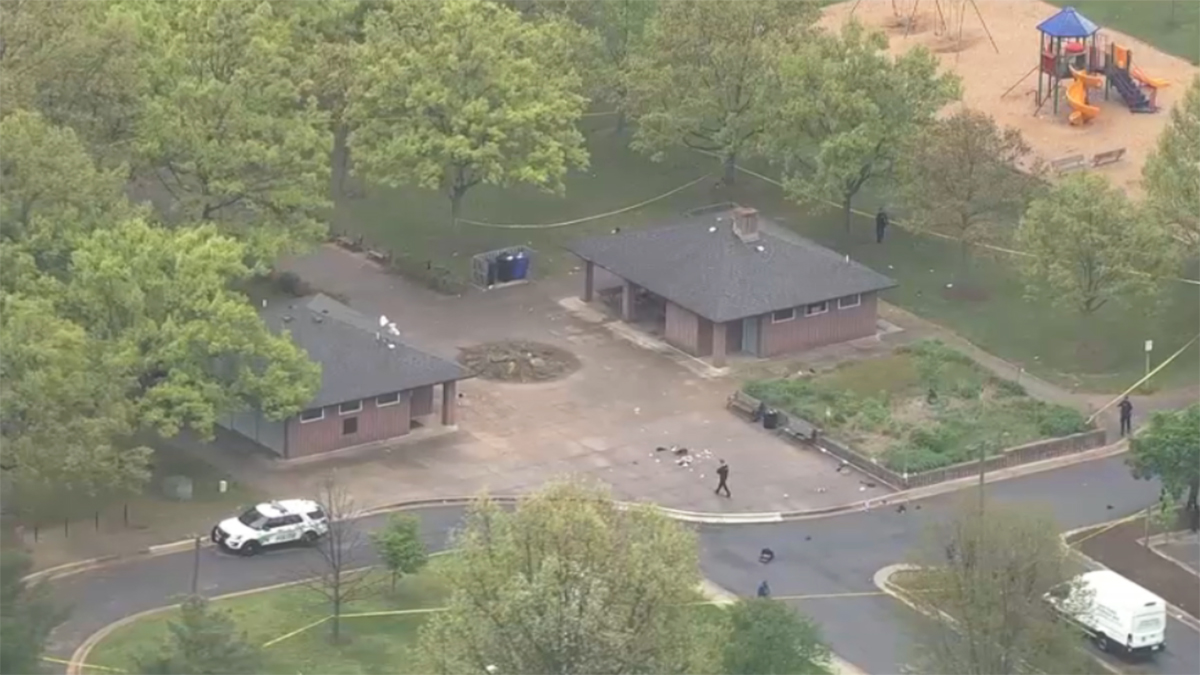
High tides surging from a narrow creek destroyed the car Kathy Blake once parked in her gravel driveway here. Over the past two decades, the water has ruined half a dozen of them.
Since October, when one of those floods filled the first floor of Blake’s home with 6 inches of water, she’s been living in a camper with her husband and granddaughter, in that same driveway.
Not far away in this tiny community on Maryland’s lower Eastern Shore, Chesapeake Bay waves have eaten away at the land Gary McQuitty uses to offer hunting trips. Last year, he had to move a duck blind inland. McQuitty expects to have to move it again soon, as the waves creep toward his hunting lodge.
The evidence of rising seas stretches to Dorchester County’s mainland, too, up the winding road toward the county seat of Cambridge. Across the rural southern half of the county, everything is projected to be inundated — frequently if not constantly — by the end of the century.
We're making it easier for you to find stories that matter with our new newsletter — The 4Front. Sign up here and get news that is important for you to your inbox.
The signs of change are so glaring around Dorchester, they are forcing difficult decisions. In this county of 32,000 people, experts say the confrontation with rising water caused by climate change is coming more quickly than just about anywhere else on the East Coast.
And it’s coming at a time when turnover has left Dorchester without key personnel who had been guiding the problem-solving.
“Dorchester County is a good example of our canary in a coal mine,” said Michael Scott, dean of the Henson School of Science and Technology at Salisbury University, who has spent years mapping land losses in the county. “These same issues are coming to a county near you. It’s just a matter of when or where.”
Local
Washington, D.C., Maryland and Virginia local news, events and information
Across Dorchester, shores have receded by as much as 600 feet since the 1970s, Scott said, and they continue to lose ground each day.
Already, rising sea levels are helping to turn the marshes of the Blackwater National Wildlife Refuge into open water, and dotting them with dead trees, killed by exposure to salt water. Refuge caretakers are selective in purchasing new land, avoiding wide swaths that are expected to be underwater within a generation.
Dorchester County homebuyers increasingly pay in cash to avoid the skyrocketing flood insurance premiums that mortgage lenders require.
Road closures are routine as high tides jump riverbanks and rise through storm drains. There is talk of curtailing any new development across southern Dorchester, even as there’s also discussion of extending sewer lines to far-flung communities where a rising water table threatens widespread septic system failures.
Buildings and artifacts dating to the times of county native Harriet Tubman, or to days even before Captain John Smith toured the county’s shores, are at risk. As historians assess the threat to cultural resources, they say that in some cases their only logical option will be to meticulously document what’s there before it’s lost.
Also threatened is the historic center of Maryland’s seafood industry on Hoopers Island, where crab-picking operations are already struggling amid labor shortages and the coronavirus pandemic.
Through it all, a fundamental question faces residents like Blake and McQuitty. Stay and adapt, or give up and go?
Their answers are different, though neither believes the waters will stop rising. They agree they live in a beautiful place that is at risk.
“Once it goes, you’re never getting it back,” McQuitty said.
HISTORICAL FORCES MADE WORSE
Dorchester has always been flood-prone during Maryland’s worst storms, such as Hurricane Isabel in 2003, which damaged hundreds of homes in the county.
And the county has long dealt with erosion eating away at exposed peninsulas and islands. More than 300 people lived on Holland Island, about 10 miles south of Hoopers, into the early 1900s, but its last house collapsed into the bay in 2010. Applegarth, the southernmost of three villages that once constituted Hoopers Island, didn’t survive the 1933 Chesapeake-Potomac hurricane, the same devastating storm that wrought Ocean City’s inlet.
The threats tides and storms pose to the county are expected to accelerate as the climate warms, suggesting more communities will inevitably disappear. Models suggest the Chesapeake Bay will rise as much as 2.1 feet by 2050 — enough to put most of the southern half of Dorchester under water — and close to 4 feet by 2100. Scientists say this is happening both because global seas are rising as temperatures do, and because the Delmarva Peninsula has been sinking since the last Ice Age.
Over the past decade, the county has begun to address the dire predictions.
After years of debate, the County Council in 2011 adopted a policy requiring the lowest floor of any new structure to be elevated at least 2 feet above a base flood level. In 2016, officials revamped a tax sale process designed to encourage redevelopment of vacant buildings. They added a step that reviews flood hazards before those properties receive any investment. The policy won an award for innovation from the Maryland Association of Counties.
Jim Bass, coastal resilience program manager at the Eastern Shore Land Conservancy, praised the county for “some remarkably progressive ideas” for a rural, conservative community.
Officials hardly had a choice, he suggested.
“When you’re watching your backyard wash into the Chesapeake Bay, we’re not talking about the philosophies of climate change anymore. We’re talking about public safety now,” said Bass, whose organization is focused on preserving Eastern Shore communities and quality of life.
That doesn’t mean it’s easy for residents to agree on solutions. Though the erosion is undeniable, many say they aren’t sure climate change is the cause.
The county has laid out many ideas for adaptation in a new comprehensive plan, a draft of which is under review. It calls for efforts to preserve cultural heritage, restrict development along shorelines, and explore use of state and federal money to raise vulnerable structures or install flood vents that prevent water damage.
As officials prepare to put those policies into practice, the county government is without several staff members who have helped guide its approach in addressing flooding, including its director and assistant director of planning and zoning and its head of emergency management. An environmental planner also recently departed, for a similar job in Wicomico County.
County manager Keith Adkins said he is busy working to fill the vacancies, and did not respond to further questions from The Baltimore Sun. County Council President Jay Newcomb, a Democrat who owns Old Salty’s Restaurant on Hoopers Island, did not respond to requests for comment.
Councilman Lenny Pfeffer, who is said to be the body’s first member who wasn’t born and raised in Dorchester, called flooding a major concern, but said he worries that with just $60 million in the county’s annual budget, it can’t afford to be proactive in addressing the threat. Sen. Addie Eckardt, a Republican who represents people in Dorchester and three other Shore counties, said the economic contraction brought on by the coronavirus pandemic will make it more difficult for the state to help address land loss.
There could be more federal help ahead. A program passed into law in 2018 could begin offering grants by the end of this year, with a total amount based on 6% of spending nationally on disaster relief in the previous year. The Building Resilient Infrastructure and Communities program could go toward disaster planning, projects to raise or otherwise reinforce buildings, as well as to buy out owners of repeatedly flooded properties.
GOVERNMENT BUYOUTS CONSIDERED
But that last strategy in particular has proved controversial in Dorchester. The county was developing a plan to guide buyouts in 2018, until an election in which three of five County Council seats changed hands paused the effort.
A year and a half later, discussion over the policy may soon resume — the proposed new county comprehensive plan suggests that in some cases, buyouts may be the best option.
The idea of a buyout program has sparked debate in the past because it stands in contrast to efforts to invest in new infrastructure and flood prevention in places like Norfolk, Virginia, and Annapolis, said Anna Sierra, who led Dorchester’s emergency services department from 2016 through early 2019 and now holds a similar position in Caroline County.
“It’s a very hard conversation to have,” Sierra said. “It’s hard to look somebody in the eye who is a fourth-generation or fifth-generation resident and say, ‘Your culture, your generational land, it doesn’t matter as much as it does across the water because you don’t have as much money.’ ”
It also raises concerns about the viability of the community for residents who want to stay. A birds-eye view of the southern half of the county is pockmarked with empty spaces where houses were simply torn down after Isabel, and others have long been sitting empty.
Census data shows that nearly 40% of buildings in southern Dorchester were vacant as of 2010, a rate on par with, if not exceeding, some of the most blighted neighborhoods of Baltimore.
For some, any reason to keep investing along vulnerable shoreline has already disappeared.
Morgan Tolley, who comes from a long line of watermen but has abandoned the profession himself, decided to sell his late father’s home in Wingate, a village on the southeastern side of the county. After his father died in 2015, he sold it to a Washington resident seeking a second home.
He still owns the Meredith & Meredith Seafood Co. crab processing house his family began operating in Toddville a century ago, which is listed in a Maryland Historical Trust inventory of historic properties. But he has no expectation it will be put to use again, or that anyone would want to buy property in that part of the county anymore.
“It’s just a place where watermen tie their boats up,” Tolley said. “There’s not any buying and selling going on there anymore.”
For it and many other historic and cultural resources, preservation may not be a viable option at all.
In some cases, a building may have to be altered so much to prevent flood damage it would lose its historical integrity, said Elizabeth Hughes, director of the Maryland Historical Trust. That was the trust’s determination recently when a group developing a waterfront park in Cambridge sought to move an old church that sits by a graveyard outside Vienna, some 15 miles to the southeast. The trust denied a request for a grant to cover the relocation costs.
“If you have to raise a structure to such an extent it … can no longer be understood in its historical context, you have to question to what extent are we reducing harm versus causing harm?” Hughes said.
But then there are residents and preservationists like Midge Ingersoll, who dreams of moving and recreating entire villages to protect the county’s heritage, including those of Native Americans, slaves and free Black people, and watermen. Ingersoll, who lives in a 1740s-era home that was raised 4 feet in 2000, said she hopes to see a balance between preservation and adaptation as more historic structures are threatened.
As for McQuitty and Blake:
McQuitty is among those residents pushing for resilience. He and others on lower Hoopers Island applied for a grant to explore ways to prevent the community from becoming the latest in a history of disappearing Chesapeake islands. The group is poised to receive $55,000 from the National Oceanic and Atmospheric Administration later this year. It plans to study ways to slow erosion, and estimate potential costs.
“I think it’s worth saving,” McQuitty said.
But Blake says it’s a matter of when, not if, her home floods again. She doesn’t think she’d be able to sell the simple two-story cottage. Skyrocketing flood insurance rates are already making home sales tricky along such vulnerable shoreline.
She thought she found a solution in 2018, negotiating a government buyout that would allow her family to start over elsewhere, but that deal fell apart.
Now, Blake figures her only option to escape her worries is also the worst-case scenario for an area where scars from Hurricane Isabel remain.
“My greatest hope for getting out of here is the big one,” she said.
This story originally appeared in The Baltimore Sun



